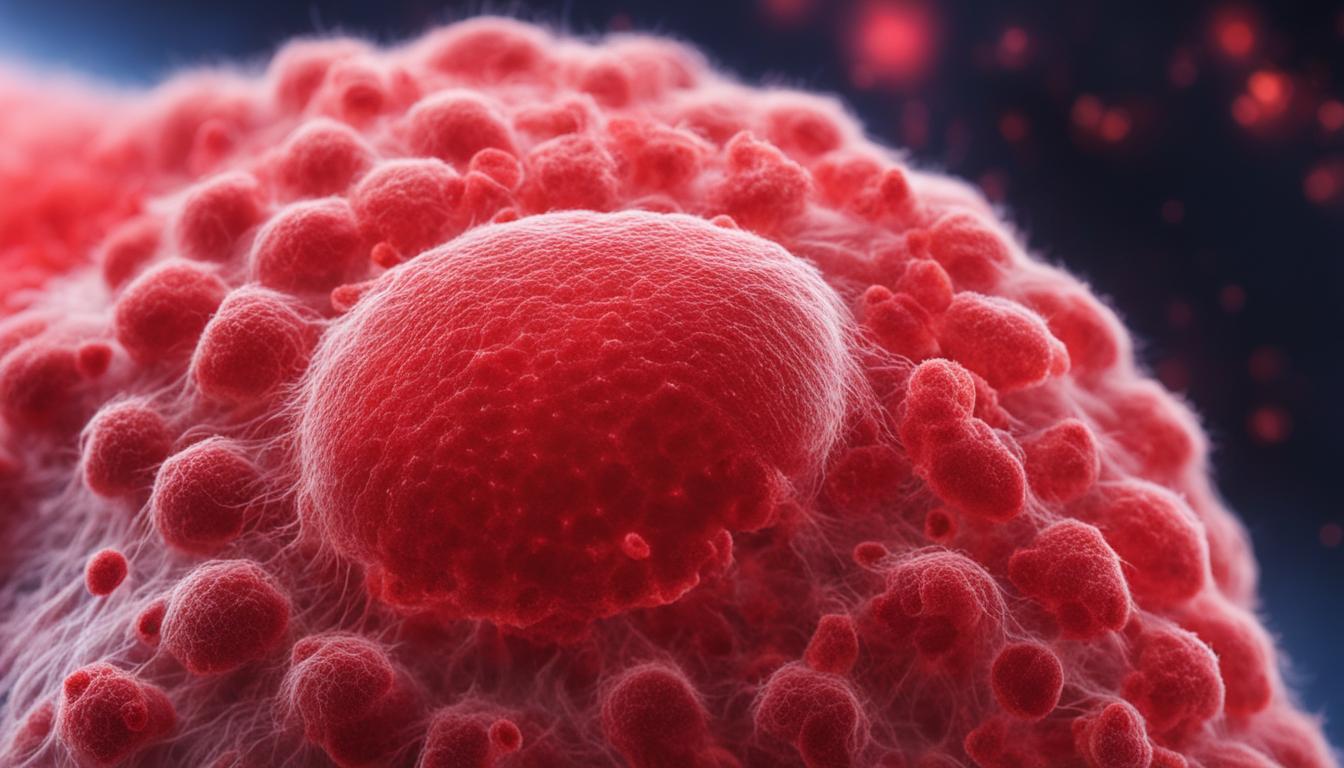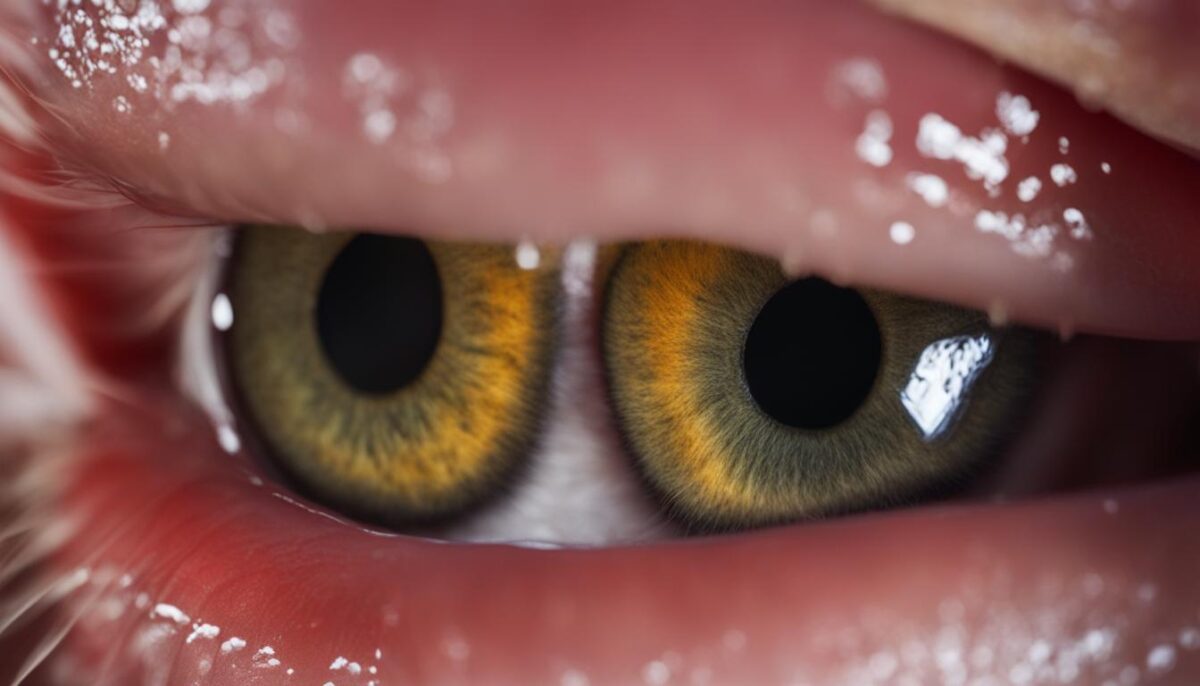You might know that people can get sick from a germ called salmonella. It can make us feel really bad. But did you know that our furry friends like cats can get it too? Yes, something called feline salmonellosis is a sneaky bug that can affect your kitty’s health and even spread to humans. Cats, like us, can catch this germ from bad food or when they go outside and meet other animals.
Believe it or not, your healthy cat could carry this germ without looking sick. This makes it a zoonotic disease, which means it can jump from animals to people. We all need to be careful because it can make a lot of people and animals sick all over the world. That’s why vets take it so seriously and tell the health people when they see it.
Key Takeaways
- Cats can catch and spread a germ called salmonella.
- This sickness is called feline salmonellosis.
- Even healthy cats can be carriers without getting sick themselves.
- Salmonella is zoonotic, meaning it can move between cats and people.
- The sickness is important to vets and health people who want to stop it from spreading.
Understanding Salmonellosis in Cats
Have you ever heard of feline salmonellosis? It’s a kind of bacterial disease in cats that can make them feel really sick. Imagine your tummy hurting a lot—that’s kind of what salmonella does to cats. But not all cats feel sick. Some might seem just fine, but they can still pass the bacteria around.
What Is Salmonellosis?
Salmonellosis is when cats get an intestinal infection from bad germs called bacteria. These germs live in a cat’s belly and intestines. Sometimes, they can make cats have a bad tummy ache, diarrhea, or even more serious stuff like blood infections, especially in very young or old cats or those who don’t have a strong feline immune response.
The Role of Bacteria in Feline Salmonellosis
Cats have lots of tiny living things in their bellies, which we call feline intestinal flora. Most of these are good and help them digest food. But there are some that can cause trouble, like salmonella. These naughty bacteria can be a problem if they decide to make your cat sick.
How Cats Become Infected with Salmonella
Cats can get salmonella in different ways. Maybe they ate something they shouldn’t have, like contaminated food sources, or they could have caught it while playing outside or scrapping with an infected animal. There are risk factors for cats— like being very young, very old, or having medicine that might make it easier for them to get sick. They can also get salmonella from being a feline salmonella carrier without even knowing it!
| How Cats Get Sick | Risk Factors |
|---|---|
| Eating contaminated food | Young or old age |
| Meeting sick animals | Weak immune system |
| Touching dirty surfaces | Stomach problems |
Can Cats Get Salmonella?
Yes, your furry friend can get a sickness called salmonella infection in cats. This means they can carry tiny bugs, or bacteria, that make them and sometimes people sick. What’s tricky is, some cats can have these bacteria without feeling unwell, but they can still pass them on to others. These are known as feline carriers of bacteria. It’s like being a secret agent, but for germs!
When we talk about transmissible feline diseases, these can spread from one kitty to another. Just like when you share your toys, cats can share their germs. So, it’s super important to keep everything clean and watch out for signs that your cat might not feel good.
Let’s take a peek at some quick tips to keep those germs at bay and help your cat stay happy and healthy:
- Always wash your hands after playing with your cat or cleaning their stuff.
- Keep your cat’s eating area squeaky clean—no dirty dishes!
- Don’t let your cat eat raw meat—it can have icky germs.
Have a look at this table to see how cats get sick and what you can do:
| How Cats Get Germs | What You Can Do |
|---|---|
| Eating raw food like meat or eggs | Give your cat cooked food |
| Touching dirty places or poop | Keep their litter box clean |
| Playing with or eating icky bugs or mice | Have fun with your cat indoors |
If your cat does get sick, it’s not your fault! They have good doctors, just like you do, who will help them feel better. Remember, you can always help your cat by being a super-clean buddy.
Human Health and Feline Salmonellosis
Did you know that your fluffy cat can bring a sneaky guest into your home without even knowing it?
Yup! We’re talking about salmonella, a tricky germ that can jump from your cat to you. It’s part of a group we call zoonotic risks, which means germs that go from animals to people. Now, don’t worry, we can keep you both safe with some smart moves!
The Risk of Transmission to Humans
Imagine you’re giving your cat a belly rub, and then you grab a cookie with the same hand. Oops! Germs from your cat could now be having a snack party with you. That’s how human infection from cats can happen. Remember, even if your cat seems perfectly healthy, it’s best to wash your hands after playtime!
Hygiene Practices to Mitigate Risk
Now, let’s talk about keeping those invisible germs under control. First off, washing your hands is like sending those germs down a mini-water slide, straight to the drain. Using soap and warm water works best!
Here’s a tip: Sing “Happy Birthday” twice while scrubbing, and you’ll hit the timing just right.
| What To Do | Why It’s Good |
|---|---|
| Wash hands after touching your cat | Keeps your hands free from germs |
| Wear gloves for litter box cleaning | Germ barrier = germ parrier (get it?) |
| Keep cats away from food areas | Cats on counters can spread more than cuteness |
| Clean cat areas regularly | Fresh and tidy stays germy and grimy away |
By being a super health precaution superhero for your pet, you help everyone in your house stay healthy. And if you’re handling kitty gear, like their favorite toy mouse or that cozy blanket they love, maybe wear gloves too, or wash up afterward to avoid contamination.
Just think of it this way: a little bit of soap and water today keeps the doctor away. Okay, it’s not quite the same as the apple saying, but it sure works!
Salmonellosis Among Various Animals
Did you know that your furry friends can get sick from the same germs as you? It’s true! Salmonella can spread from your sick kitty to other pets in your home. To keep everyone safe, you need to know a few important things.
How It Affects Other Pets in Your Home
Your dogs, bunnies, or even parrots could catch salmonella, just like cats. It’s a sneaky germ that can cause big problems — we call this a cross-species infection. But don’t worry, there are simple things you can do to help protect your pets from getting sick.
Contagion Control Measures
First, always use gloves when you clean up after pets, especially when you change your cat’s litter box. Cleaning with bleach helps keep everything very clean and stops germs from spreading. If your cat isn’t feeling well, a feline quarantine might be needed — that means keeping them in a separate room until they’re better.
Environmental disinfection is another fancy way of saying “keeping your home super clean.” It’s especially important when you’re dealing with salmonella, which can live on surfaces longer than most germs.
By following these infection prevention strategies, you’re not only protecting pets from salmonella, but you’re also making sure your home is a safe place for everyone!
Common Causes of Salmonella in Cats
Hey, did you know that our furry friends can get sick with something called salmonella? It’s a kind of bacteria that can make cats and even us humans feel pretty bad. Cats might get this from eating something they shouldn’t or from touching stuff that has the bacteria on it.
Sources of Infection for Your Feline Friend
When your cat goes on an adventure outside, they might hunt small animals. Or, they could munch on some food that isn’t cooked all the way. These are some ways they can pick up salmonella. Let’s look at where this bacteria can come from:
- **Raw meat**: If cats eat meat that isn’t cooked, they could get sick.
- **Hunting**: Catching and eating birds or mice might be risky because these animals can carry salmonella.
- **Dirty places**: Sometimes, spots outdoors or even your cat’s food bowl could have germs if they aren’t kept clean.
Risk Factors Influencing Transmission
Think about when you’re not feeling too good; you might catch a cold easier, right? Well, cats are the same! If they are really young, kind of old, or not feeling great, they can get salmonella easier. Here’s a quick chart to show you the different things that can make this more likely:
| Age | Diet | Health |
|---|---|---|
| Kittens and older cats | Eating raw foods | Being sick or on medicines like antibiotics |
So, make sure your cat eats safe, clean food and stays away from those sneaky spots that can make them sick. And remember, if your cat is on any medicines or if they’re not their playful self, be extra careful and maybe check with your vet. This way, you can help your kitty friend stay healthy and happy!
Identifying Symptoms of Salmonella in Cats
Does your cat feel sick? Sometimes cats get a tummy bug called salmonellosis. It can be hard to tell if they have it because they can’t speak! You’re the best person to watch out for signs. Cats with salmonella might have some trouble, like being really tired, losing weight, or having a fever.
When cats’ tummies don’t feel good, they might not want to eat much. They could throw up, have diarrhea, or even have blood in their stools. These are clues of feline digestive issues. They are warning signs saying, “Hey, it might be time to go see the vet!”
If your cat is not acting like itself, such as playing less or breathing weird, it’s time for professional feline healthcare. These could be feline emergency symptoms, and it’s super important to not wait.
Telltale Signs of Infection
- Not eating much or at all
- Throwing up
- Diarrhea, sometimes with blood
- Fever, which means your cat might feel hot
- Weight loss
- Acting less playful or sleepy
When to Seek Veterinary Care
It’s not easy to recognize feline illness, but if your cat shows any of these signs, please take them to the vet. The doctor will check them out and might test their poop, spit, or blood to see if they have symptoms of bacterial infection.
The tricky part is, salmonella doesn’t always show up in poop tests. So, the vet has to be smart like a detective! If your fur friend has salmonella, the vet will give them special care. Then, they will do another test later to make sure your cat is all healthy again. It’s super important to help your cat feel pawsome!
Treating Feline Salmonellosis
When your cute kitty friend gets a mild case of salmonella, known as salmonellosis, you might be able to help them feel better at home. Remember, keeping your cat hydrated and making sure they keep eating is super important. Always follow what the vet tells you to do and keep things clean to help your kitty recover.
Home Care for Mild Infections
If your cat has a mild infection, there are home remedies for feline salmonella you can use. This includes giving them small, easy-to-eat meals and lots of fresh water. Keep an eye on them and give them a cozy spot to rest. Your love and care are the best medicine!
The Importance of Veterinary Interventions
For more serious sickness, like severe feline infections, your cat might need help from the vet. This could mean staying in the animal hospital, getting special fluids, and sometimes a tube to help them eat. The vet may give them strong medicine to fight the infection. They know just what to do, so it’s important to listen to them.
| Support at Home | Veterinary Care |
|---|---|
| Ensure continuous access to water | Fluid therapy to prevent dehydration |
| Encourage your cat to eat | Nutritional support possibly via a feeding tube |
| Keep their bed and food area clean | Antibiotics to treat salmonellosis |
| Monitor your cat’s health closely | Regular check-ups to monitor progress |
After your furry pal gets all better, keep them away from other pets for a bit and visit the vet for some check-ups. This way, you can be super sure the salmonella is gone for good!
Conclusion
Keeping cats healthy is a big part of being a good pet owner. To stop cats from getting sick with salmonella, there’s a lot you can do. It all starts with keeping things clean and knowing what your cat eats. You can keep your furry friend safe by not letting them eat raw meat or hunt birds outside. Not only does this help your cat, but it also keeps everyone in your home safe from getting sick.
Preventing Salmonellosis in the Feline Population
If you have a cat, stopping salmonella comes down to a few simple steps. First, keep your cat’s living area spotless. That means regular cleaning of their litter box with the right gloves and cleaners. Also, it’s best to have your cat live indoors, where they can’t eat raw meat or catch birds. These are all things you can do to lower the chance your cat will run into salmonella.
Proactive Health Measures for Cat Owners
Remember, it’s your job to watch out for your cat’s health. You can do this by always keeping things clean, especially the litter box, and keeping sick cats away from healthy ones. It’s also a good idea to visit the vet often, so your cat can have check-ups to stay in tip-top shape. By feeding your cat safe foods and making sure they stay inside, you have a better chance of avoiding bacterial infections. Keeping your pet healthy means they can be a happy part of your family for a long time.
FAQ
Can Cats Get Salmonella?
Yes, cats can contract salmonellosis, which is caused by the salmonella bacteria, and they can become both sick from it and carriers of the bacteria.
What Is Salmonellosis in Cats?
Salmonellosis is a bacterial disease that can lead to infections in cats, including inflammation of the intestines and more serious bloodstream infections, especially in younger, older, or immunocompromised cats.
How Do Cats Become Infected with Salmonella?
Cats can get salmonella by coming into contact with the stool or saliva of infected animals, eating raw or undercooked meat, hunting wild birds or animals, or interacting with contaminated surfaces.
Can Humans Contract Salmonella from Cats?
Yes, salmonellosis is a zoonotic disease, meaning it can be transmitted from cats to humans. People can catch it by touching infected areas where a cat has been and then not washing their hands properly.
What Are the Symptoms of Salmonellosis in Cats?
Symptoms in cats range from none at all to fever, weight loss, bloody stools, diarrhea, decreased appetite, vomiting, and in severe cases, difficulty breathing. Any cat showing these signs should see a vet promptly.
How Can I Prevent My Cat from Getting Salmonella?
To protect your cat, practice good hygiene with litter boxes, avoid feeding raw or undercooked meats, supervise outdoor activities to reduce hunting, and keep your cat’s living space clean.
What Should I Do If I Suspect My Cat Has Salmonella?
If your cat shows symptoms of salmonellosis, isolate them to prevent spreading and take them to a vet for a diagnosis and treatment. Also, thoroughly clean and disinfect areas where your cat spends time.
What Hygiene Practices Can Mitigate the Risk of Salmonella Transmission?
Wash your hands frequently, particularly after handling your cat or cleaning their litter box. Use gloves and bleach-based cleaners for additional safety, and avoid cross-contamination by keeping cats away from food preparation areas.
How Does Salmonellosis Affect Other Pets?
Other pets can contract salmonella in similar ways to cats. It is important to maintain a clean environment, isolate infected pets, and practice good hygiene to prevent cross-species infection.
When Is Veterinary Care Necessary for a Cat with Salmonella?
Veterinary care is necessary when your cat shows symptoms of salmonella infection. Prompt treatment can be critical, especially for severe cases that may require hospitalization and more intensive care.


